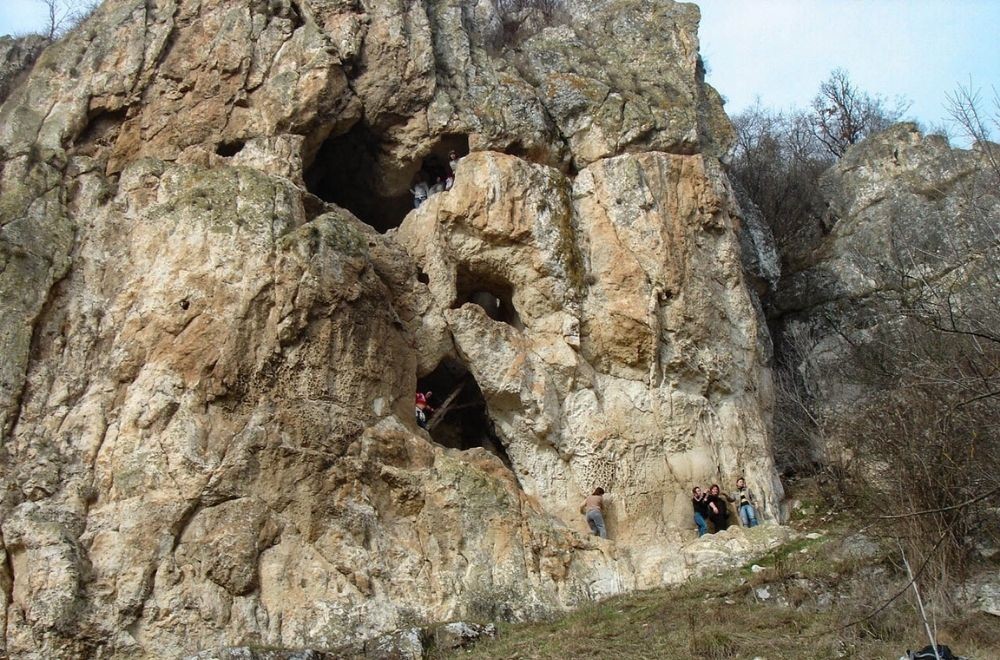To the North of the town of Dobrich, one million years ago, there was a prehistoric ocean, and later, a river cut a stunning canyon into the valley, which has become home to an incredible diversity of flora and fauna. The once fast-flowing river has dried out, that is why this area is called Dry River. But high up, somewhere between sky and Earth, there are forbidding dark openings cut into the cliffs, the openings to monastic cells, gaping like doorways to a time long gone and a world long forgotten.
In early Christian times the valley developed into a religious hub in this part of Europe. From the 5th to the 11 century the cells and hermitages gave shelter to a large community of hermits practicing Hesychasm. These retreats are still not well studied. Attempts have been made to cut pathways leading up to them but nature has taken its toll and most of them are overgrown and barely passable, says Ivelina Romanova from the Regional Museum of History in Dobrich.

The one that is easiest of access is called “Shan Kaya”, the “Wondrous Rock” in Turkish, and it is located in the vicinity of Onogur village. It is a very narrow corridor, 64 metres long, with monastic cells on either side. It is cut into a rock ledge over Onogur dam. Some of the cells have window openings revealing an amazing view of the dam.

Close to Balik village is the biggest concentration of rock cells within the bounds of Dobrudzha – around 12 cells, each with its own history and legends. But the ones in the vicinity of Efreitor Bakalovo village seem to hold the biggest fascination:
“One of the monastic rocks is called "Tarapanata", the Mint because coins were minted there,” says Ivelina Roamnova. “It resembles a human head. The two upper levels – the eyes – were used as a chapel and living quarters. The lower level – the mouth – is also divided in two. Some 100 metres from “The Mint” rises “Sanduk Maara”, a 3-tier monastic crypt. Due to erosion, its upper levels can only be reached by primitive wooden ladder. On the highest tier there are traces of a ceremonial altar. From this level the view of Dry River is breathtaking. Next to this rock are the “Bulgarian houses” – a huge complex of cells and niches, as well as a church, located at different elevations.”

The hermits mostly ate fish, then they shifted to vegetables, and in the last stage of their earthly lives, they only drank water. That was how the hermits departed from this world, Ivelina Romanova says.
“These hermits chose places that are very difficult of access. Sometimes the only way out of their cells and down to the river was by rope. In the end, totally exhausted, they would burn the only ladder they had so as not to be tempted to continue their earthly lives, and were self-mummified. It was their way of seeking perfection in solitude, with their God,” Ivelina Romaniva says in conclusion.
In our day there are people of different ethnographic communities and religions living in the area. That is the reason why the cells and niches in the rocks have Bulgarian but also Turkish names. On the first day of May Christians and Muslims visit these holy places together to draw on their strength.
Photos: Veneta Nikolova, Ivelina Romanova
The Bulgarian Land Forces are celebrating their holiday today. A statement from the Ministry of Defense's press center notes that November 19, 2024 marks 139 years since the glorious victory at Slivnitsa and 146 years since the establishment of..
The book "Ten Great Friends of Bulgaria" by journalist Milena Dimitrova will be presented this evening at 6pm at the Sts. Cyril and Methodius National Library in Sofia. The book recounts the lives of ten people of different nationalities and eras, whose..
The Getty Museum in Los Angeles, USA, is hosting a webinar today entitled Who Were the Thracians? Professor of Classical and Ancient History Matthew Sears will discuss the Thracian legacy and its influence on ancient Athens. Sears is the author of..
On November 25, the Bulgarian Orthodox Church honours the memory of St. Clement of Ohrid – a distinguished archbishop, teacher and scholar. He was among..

+359 2 9336 661
